Deepest Hole On Earth Permanently Sealed After Finding A Shocking Discovery
Every day you hear about explorations, but very rare, if at all, do you hear about scientists being forced to an abrupt end, a mind blowing investigation. It happened in Northwestern Russia on a secluded cape where scientists expended several years boring through the Earth towards its core for more than forty-thousand feet.
A depth that man had never previously ventured. However, an unpredictable situation arose, forcing the scientists to call it
wraps. What was it?
The Mysterious World Beneath Us
People, inevitably, are intrigued by what sits underneath the earth’s crust. They’ve also been fascinated about gazing up to explore the mysteries of the galaxies since that synthetic satellite was blasted into space in the late 1950s.

Image: Alexyz3d/Getty Images
Our knowledge of the cosmos is at the broadest it’s ever been, thanks to the efforts of international entities and individual corporations with space as their ultimate focus. Still, as we gaze to the heavens in awe, are we missing out on a next world just as enigmatic as here on Earth?
Space or Underneath Us? Which Is More Fascinating?
Surprisingly, some people claim that our knowledge of space has surpassed our understanding of what lies under the Earth’s surface.

Image: VASILY BOGOYAVLENSKY/AFP via Getty Images
Although many people are familiar with the Cold War-era space race between the United States and the Soviet Union, few are aware of the similarly fascinating struggle to conquer our underground planet.
Russia Vs. US-Race To The Unknown
In the mid-1900s, rival science experts from the United States and Russia started planning elaborate experiments to penetrate the Earth’s crust.

Image: NASA Goddard Space Flight Center
A thick shell, which stretches as far as thirty miles into the middle of our planet, slowly lends a path to the mantle, which is an incredible interior section that accounts for forty-percent of Earth’s magnitude.
The United States Takes The Lead...or Maybe Not!
The United States then pulled ahead in 1958 with the introduction of the Mohole Project. The mission, which occurred near Central America in Mexico’s vicinity, had seen a team of experts tunnel through the Pacific Ocean’s floor to a distance over 150 meters.

Image: Ken Doerr
Nevertheless, their budget was slashed less than a decade later, forcing them to discontinue the project. The US scientists were unable to accomplish their dream to reach the centermost layer of the Earth.
The Race Is Not For The Swift
With the US team not being able to realize their goals, it became time for the Russians to take up the “mantle,” or should we say dig to the mantle?

Image: Scott Peterson/Getty Images
A crew of science experts began boring into the earth beneath the Pechengsky District, which has a minuscule population, in May of 1970. They had a straightforward mission: to drill into the ground to the deepest level conceivable. Furthermore, the Soviets planned to drill to a depth of just under 50 thousand feet below the crust of the Earth.
The US Rejoins The Earth Core Tace, Unknowingly!
Excavators started digging a sequel of boreholes branching off from alone primary crater with specialized devices.
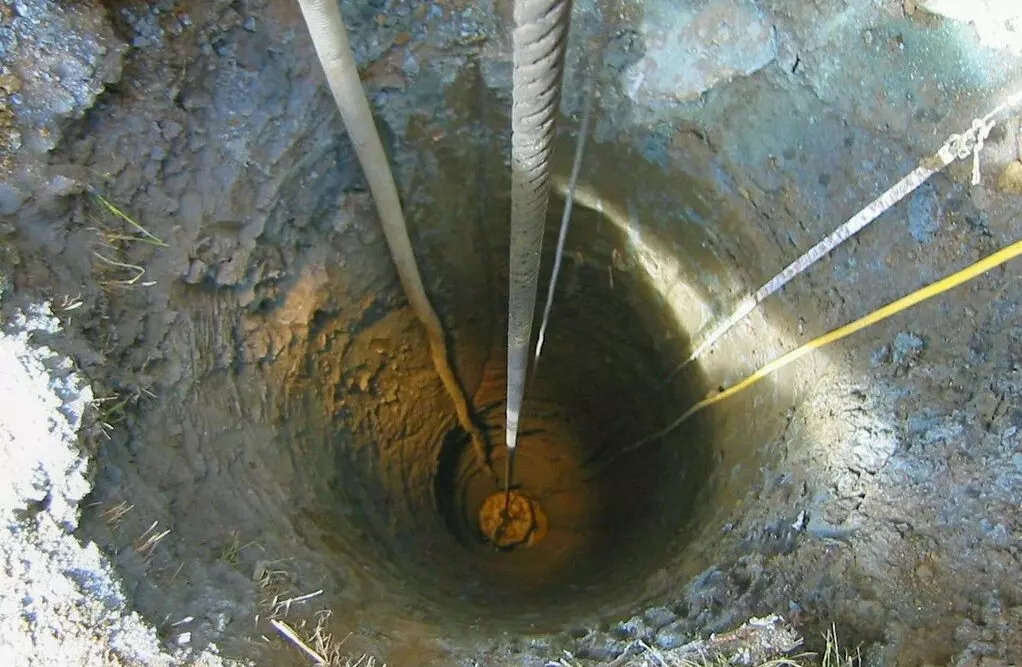
Image: Hitchster
Meanwhile, the Americans who had not given up hope were also gradually forging ahead with their quest toward the Earth’s mantle. The Lone Star Producing Company came into the mix of things with full force. Their drilling efforts got underway as an oil prospect in the Washita County area of Oklahoma.
Winning A Race You Weren't Competing In
This was in 1974, and their venture led to what became known as the “Bertha Rogers hole,” a wonder created by man that stretches approximately 9.5 km underneath the earth’s surface.

Image: Hitchster
Although Lone Star could not uncover what it went in search of, its undertaking created the world’s deepest hole. They maintained that record for another half a decade. In June of ’79, the record was shattered by a borehole named SG-3 from Kola.
Yet Another Fascinating Surprise!
Four years later, the hole, which was not even ten inches wide, burrowed to a staggering 39 thousand feet into the depths of the Earth’s layers. Researchers on the Kola Peninsula briefly put down their machinery after reaching this landmark. They stopped construction on the borehole for a year so that visitors could see the fascinating achievement. Something they weren’t anticipating transpired the following year.

Image: via The Earth Chronicles of Life
Just as they got ready to resume the digging into the Earth’s crust, drilling had to be terminated due to a technical issue. The Soviet explorers were not going to allow their team to be outdone.
Can't Suppress The Curiosity Of An Explorer
They dumped the original borehole and commenced again from a depth of about twenty-three thousand feet. After about five years had gone by, the forceful team had dug to a depth of more than forty thousand feet.

Image: Andre Belozeroff
Perhaps more extraordinary, the borehole was expected to hit its anticipated depth of forty-nine thousand feet by ’93. But under the isolated Russian tundra, something unforeseen awaited. And, strangely, as the drill dug deeper and closer to the Earth’s core, something strange transpired. For the first ten thousand feet, things weren’t going as the diggers believed they would. Temperatures inside the borehole were mostly consistent with what the researchers had predicted at the onset.
Things Begin To Heat Up, Literally!
However, beneath that level, the temperature rose at a much faster rate. So, once the digging got close to its mark, the hole had gotten ridiculously hot to more than 350 degrees Fahrenheit. That heat level was about 176 degrees higher than they had perceived.

Image: Blondinrikard Fröberg
But that wasn’t the end of it. The researchers also found that the rock at these depths was much less dense than they had expected. As a result, it responded strangely and unpredictably to the elevated heat situation.
Time To Plug The Hole...But What Have They Found?
Resulting from the unexpected turn of events, the Kola team rescinded the operation, knowing that their equipment would lose functionality under those circumstances. It was 1992 at the time, twenty-two years after drilling had started.

Image: Bigest
Prior to sealing up what is known as the Kola Superdeep Borehole, researchers got a chance to discover some interesting aspects of the earth’s interior. They found small fossils of marine flora, for instance, at a depth of four miles. For how long they had been wrapped under many miles of boulder – which was believed to be over two billion years old – these mementos were surprisingly unscathed.
Did They Make A Huge Blunder?
However, at the most remote stretches of the Kola Superdeep Borehole, an even more thrilling discovery was made. Specialists had formerly estimated that the rock beneath the Earth’s crust changes from granite to basalt at a max depth of four miles based on seismic waves.

Image: Janko Azkoyen via Atlas Obscura
They learned on the Kola Peninsula quite quickly that what they perceived was not how things were below the Earth’s surface.
Our Scientists Get Schooled By Nature
Instead, even at the borehole’s deepest level, researchers discovered that granite was the only thing present. They eventually deduced that the modification in seismic waves was caused by metamorphic variations in the rock, as opposed to a basalt shift.

Image: senata/Getty Images
But that wasn’t the end of it. They have found running water several miles under the Earth’s surface, at depths no one expected it to be located.
Signs Of Biblical Occurrences Or Explainable Science?
In the meantime, although some commenters have interpreted the discovery of underground water as evidence of flooding in the biblical era, scientists agree that the phenomenon is the result of high pressure pushing oxygen and hydrogen atoms out of the soil.

Image: DeAgostini/Getty Images
Following that, impermeable rocks blocked the newly created water under the surface of the Earth. The collapse of the Soviet Union coincided with the closing of the Kola Superdeep Borehole, and the project was officially discontinued by 1995.
Did Explorers Interrupt The Earth's Natural Flow?
The site is now classified as an environmental threat, but some remnants from the experiment can still be seen in the nearby town of Zapolyarny, about six miles on the outskirts. Researchers are yet to break the borehole’s record, indicating that it is still the planet’s deepest entryway created by man into the Earth’s core.
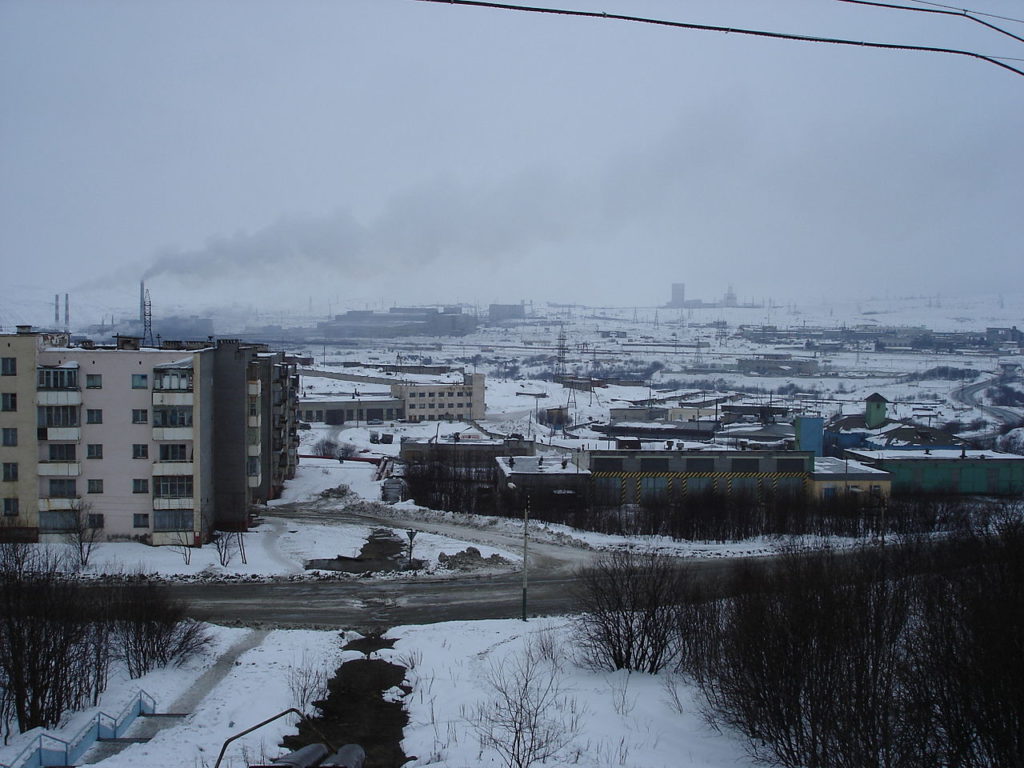
Image: wikivisually.com
The competition to the Earth’s heart, however, is far from over. Drilling systems to facilitate the International Ocean Discovery Program proceed with exploring deep under the sea’s bed, combating flunking equipment and harsh temperatures in the process of discovering what secrets are awaiting discovery.
Underwater Journeys Have Many Purposes
However, not every journey under the waters is an attempt to reach the Earth’s heart. A submersible created to accommodate two people, for example, was lowered into the frozen waters of the Antarctic on a voyage of exploration in a literal dive into the unknown. What is the goal of the crew?
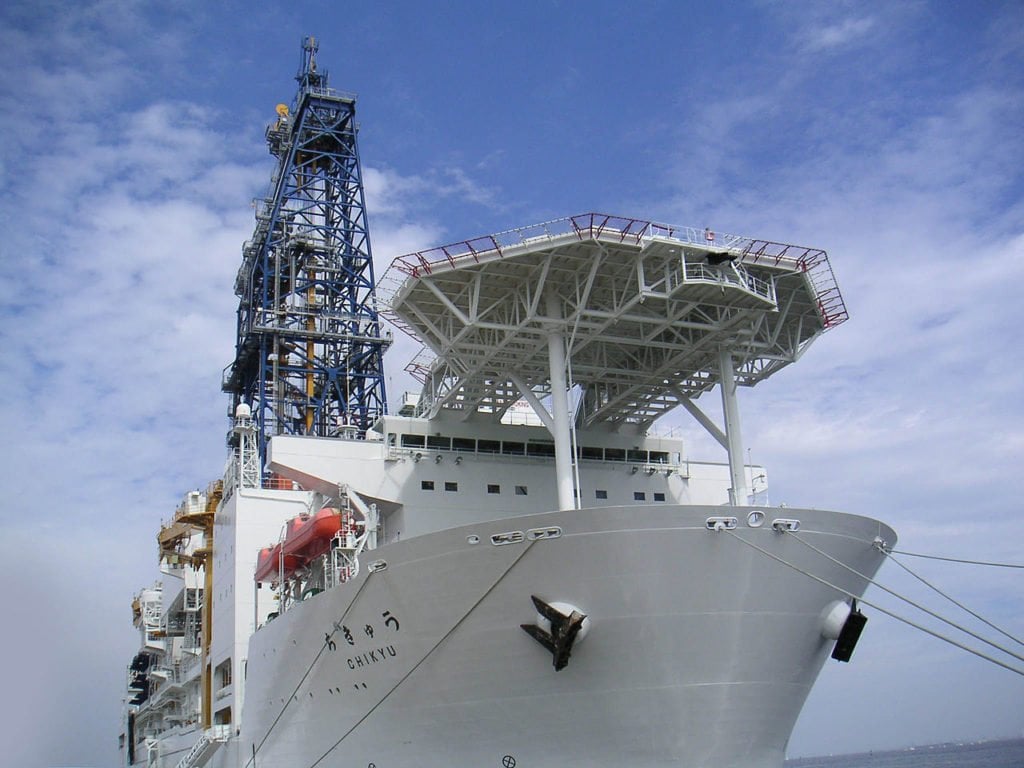
Image: Gleam
To dive deeper under the waves near the South Pole than any previous expedition in human history. And what they found down there is a breathtaking look into a world that no one has ever seen before.
Will This Scary Dive Into The Unknown Succeed?
This was not, however, a spur-of-the-moment decision. In reality, it took two years of careful planning to find the ideal time and location for the historic dive.
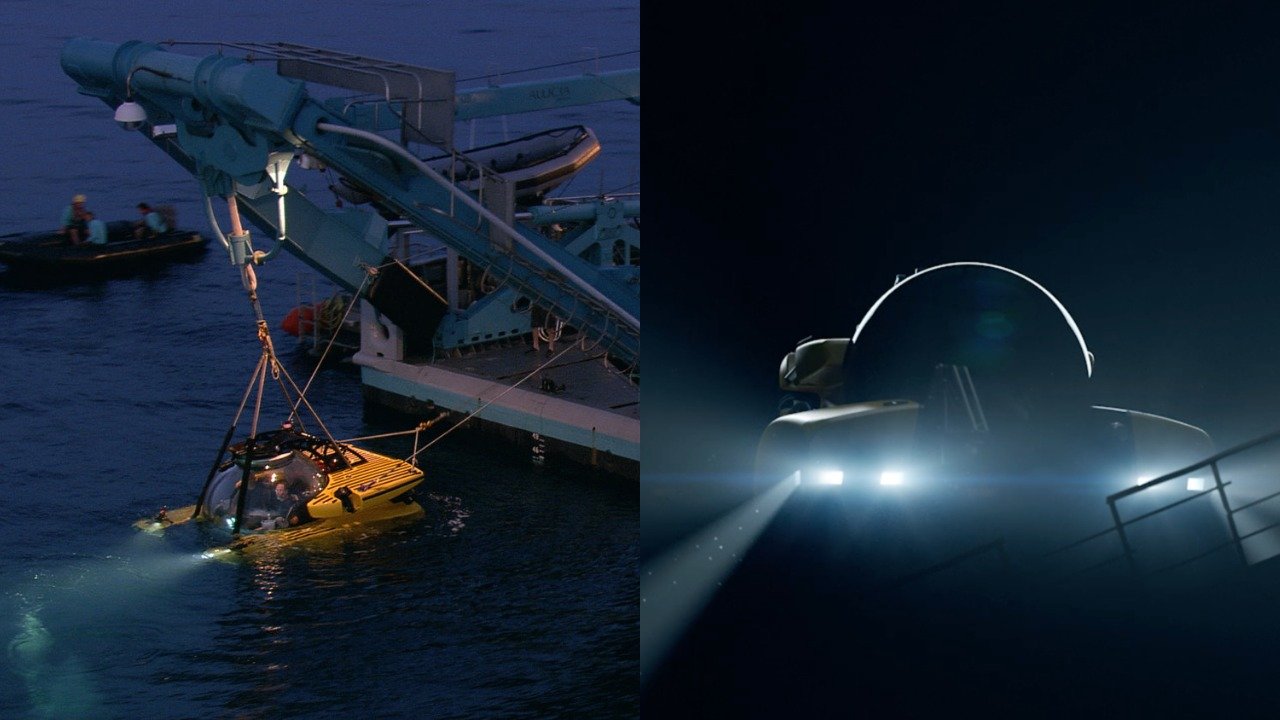
Image: Alucia / Alucia
And there’s a compelling explanation for it. We know more about the other planets in our solar system than we do about Earth’s ocean floor. Indeed, we’ve succeeded in mapping the surfaces of Mars in greater detail than the seafloors that surround us.
Under Antarctica Is No Easy Feat!
The average distance between Mars and Earth is 140 million miles, to put that into perspective. The total depth of the ocean, on the other hand, is just over 12,000 feet, or about two miles. But if that makes it sound like diving beneath the Antarctic ice is easy, you’re mistaken.

Image: YouTube/Alucia Productions
To begin, scientists had to determine the best location for their descent. However, they eventually settled on a spot known as “Iceberg Alley” – and the name wasn’t given to the area without reason.
Will Scientists Navigate This Treacherous Path?
Near one of the Antarctic Peninsula’s northernmost points, the alley in question forms a channel. It’s a stretch of the sea surrounded by moving ice chunks, some of which are about the size of a car and others covering half a square mile.

Image: YouTube/Alucia Productions
So just getting the submersible-carrying boat to the right location was a massive challenge. A documentary was made about the crew’s journey to set sail into the unknown. And there were some snags along the way, according to executive producer James Honeyborne, who told the BBC that getting through Iceberg Alley was like “a big game of Space Invaders.”
Is Diving Here Really Worth The Risk?
But it wasn’t just getting to the right spot that caused the team problems; there were also other variables at play that complicated the plan.

Image: YouTube/Alucia Productions
For one thing, the team wasn’t sure how the submarines they planned to use would work in the deep water. However, as they started their 3,000-foot descent, those fears may have disappeared.
It Snows Under The Sea!
The underwater snow beneath the Antarctic, for instance, was heavier than scientists had seen just about anywhere in the seas and oceans. But what is marine snow, and what makes it so essential to existence under the sea bed.
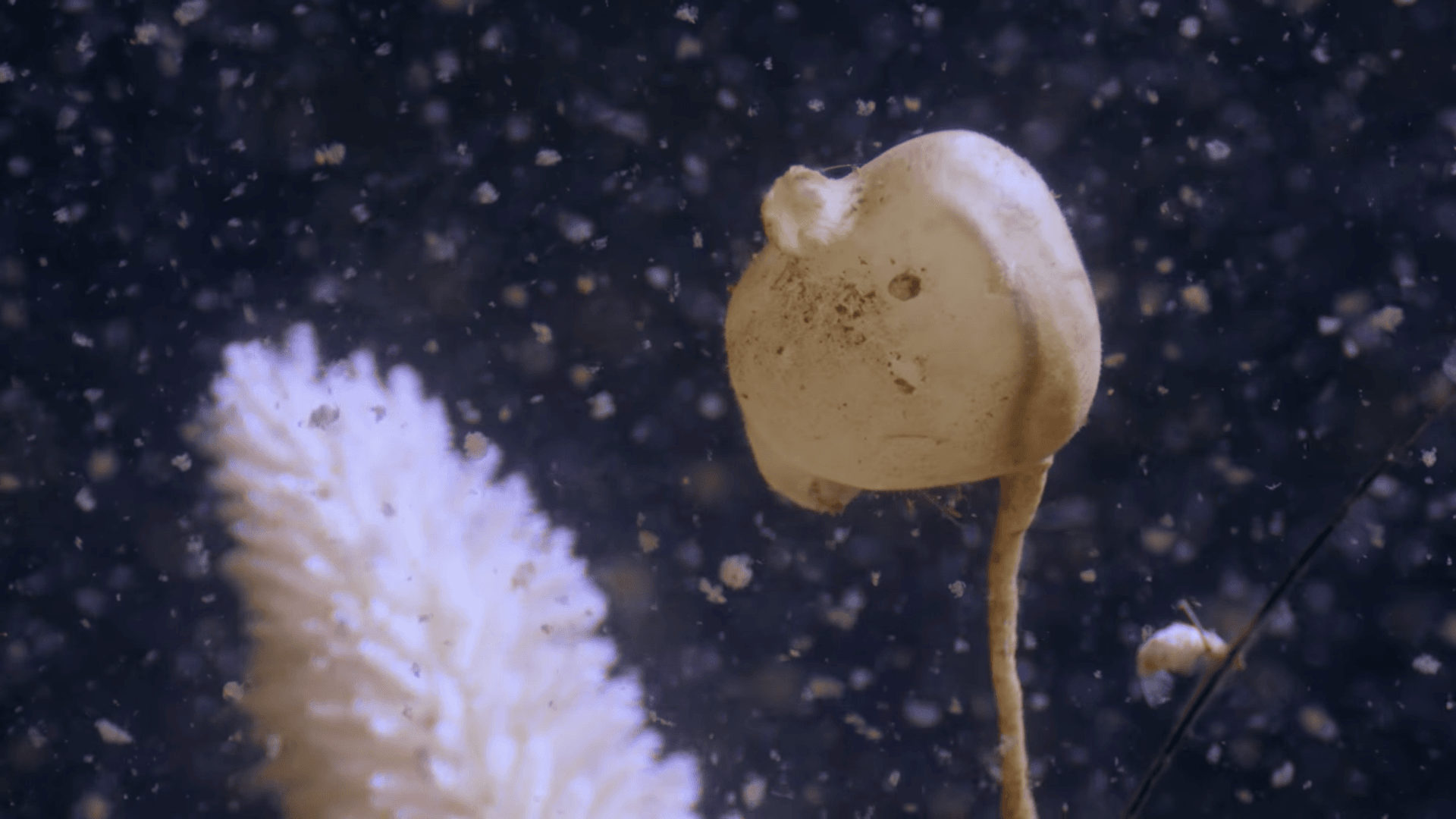
Image: YouTube/Alucia Productions
Sea snow is a natural matter that falls from the surface of the sea to the bottom. It transports energy and nutrients from sections of the waters that obtain sunshine to bodies of water that don’t, making it a vital resource of nutrition for deep-sea creatures.
When Poop Has Great Value!
However, krill poo is an important source of nutrients in the deep waters underneath the Antarctic. Krill are small crustaceans that reside in the oceans of our world and play an essential part. Their excrement, in particular, transforms the seafloor into a sticky ecosystem ideal for life.

Image: YouTube/Alucia Productions
And, as it turns out, the existence that flourishes in that place is some of the most bizarre you’ll ever see. The Antarctic Sunstar is one of the most peculiar creatures found by the team, but the explorers gave it a much more ominous name.
Holy Moly!! Is This Creature For Real?
The animal was dubbed a Death Star, and rightly so. The creature, whose Latin root is Labidiaster annulatus, is a popular starfish relation, but it’s a wholly distinct creature.

Image: YouTube/Alucia Productions
For starters, the Death Star may have up to 50 arms and grow to be larger than a hubcap. Small pincers act as a shield on their arms, and when something hits them, they clamp shut. Almost always, the poor victim is a roaming krill. And there’s another odd thing about this Sunstar.
It Doesn't Get Weirder Than This
Although fish are the primary predators in the rest of the world’s oceans, the Death Star is a classic example of Antarctica’s unique things. Little fish can usually live at the South Pole since it is so freezing.

Image: YouTube/Alucia Productions
Invertebrates like the Antarctic Sunstar have been at the top of the food chain as a result of this.
Moreover, swimming in the Antarctic is akin to gazing through a portal into what it was like in the oceans long before humans walked the Earth.
It Gets Even Weirder Under The Sea
The ice dragonfish, or Cryodraco antarcticus, is another strange creature that lives in the Antarctic Ocean. It has adapted in a remarkable way to survive in the extreme cold.

Image: YouTube/Alucia Productions
For starters, the blood carries proteins that serve as antifreeze to keep it from freezing. The blood is transparent, too, as it doesn’t need hemoglobin to transport oxygen throughout its body as we do.
All The Perils Were Worth It!
Dr. Copley and his colleagues’ mission, however, was about more than just seeing unusual animals in their natural environment for the first time. A greater understanding of how life continues in the Antarctic Ocean may also help environmental sustainability all around the South Pole.

Image: YouTube/Alucia Productions
In an interview, the scientist clarified that during these dives, they observed the daily lives of Antarctic deep-sea creatures, which helped the crew understand them much better than following samples obtained by traps or trawls from ships. “It’s also assisting us in determining if our existence is linked to this isolated and delicate ecosystem.”
Is This A Wrap Or Not?
Even the most open areas of the oceans are a mystery, according to Dr. Copley, who believes that this exploration will help to change that. “Sending divers a kilometer down into the sea in the vicinity of Antarctica for the introductory period indicates that no portion of the blue planet is elusive to scientists if they have a desire to venture there.

Image: YouTube/Alucia Productions
Beyond the potential for scientific breakthroughs and a greater awareness of our environment, there’s something much more meaningful about visiting a remote place. Dr. Copley said, “What we’re doing now is an experiment in the purest sense.” “If we all participate in the discovery of our world, we will all feel a sense of responsibility for its future stewardship.
